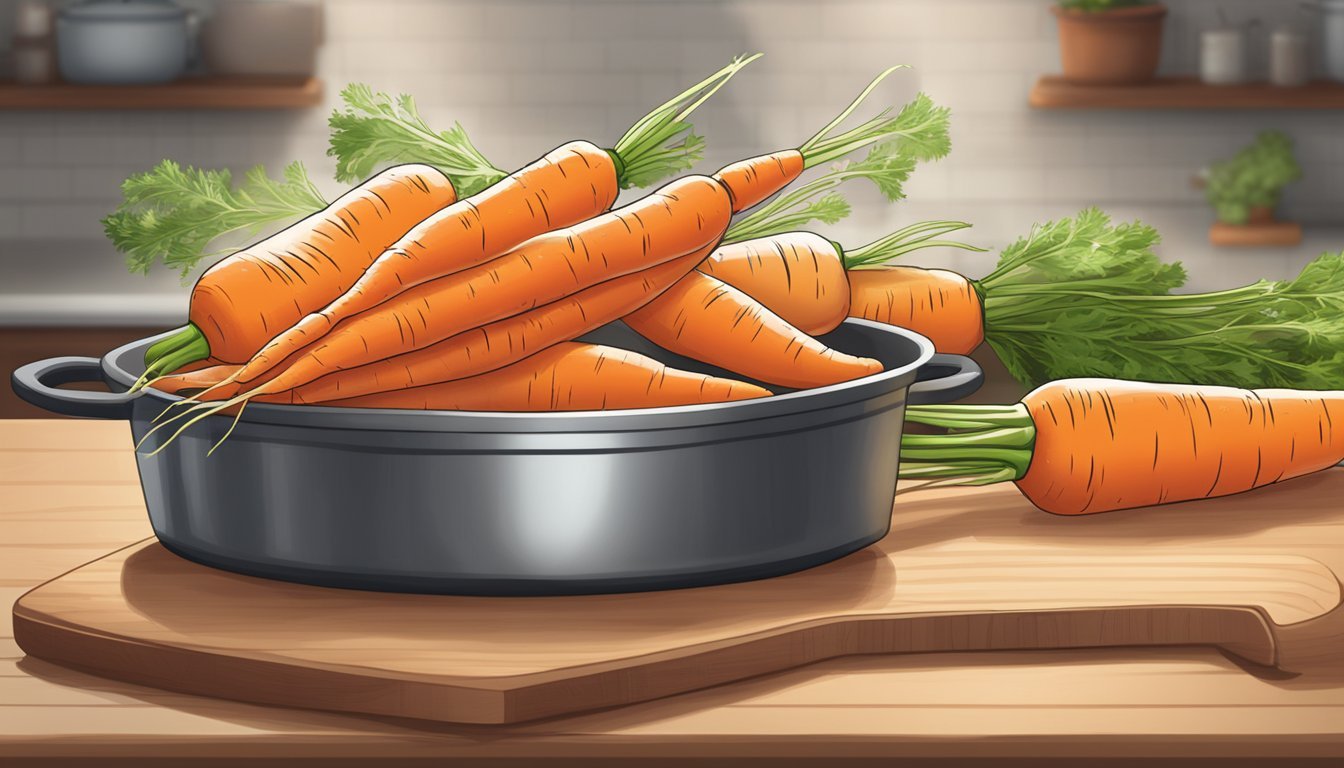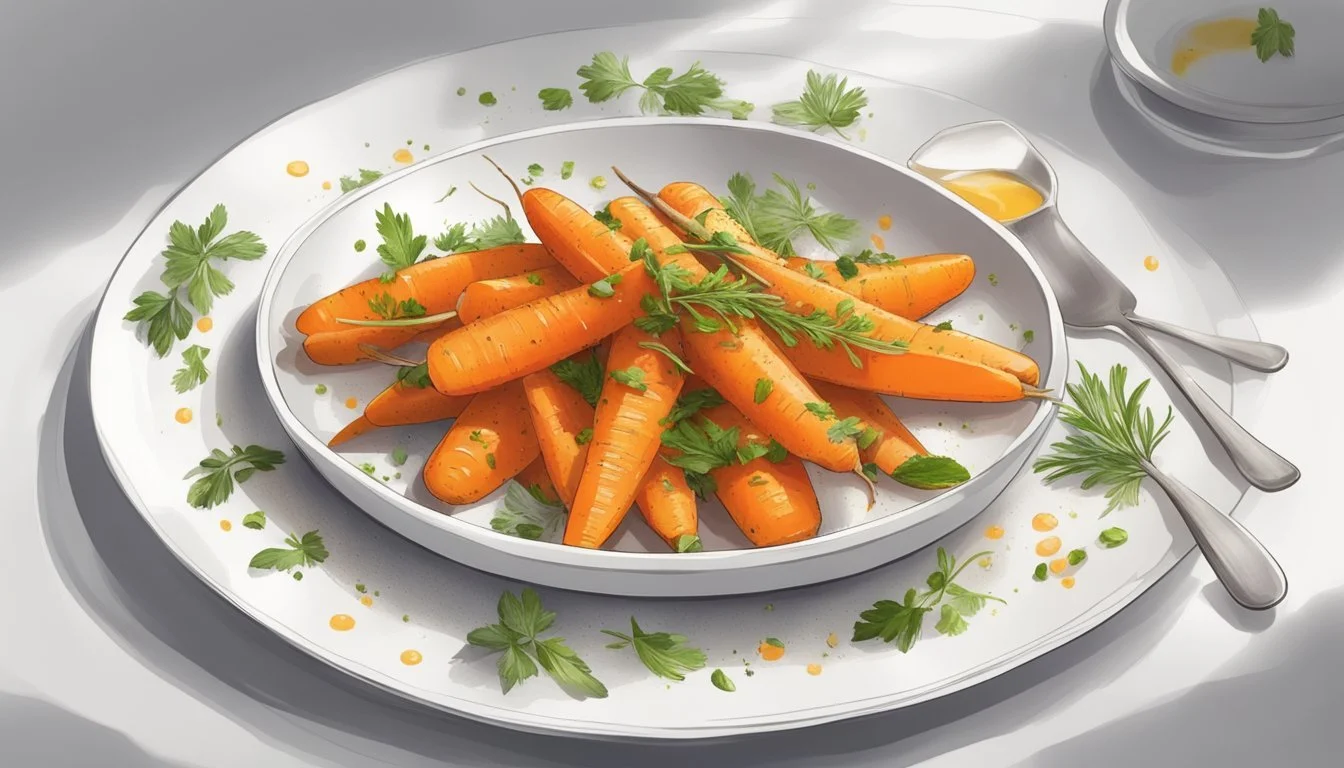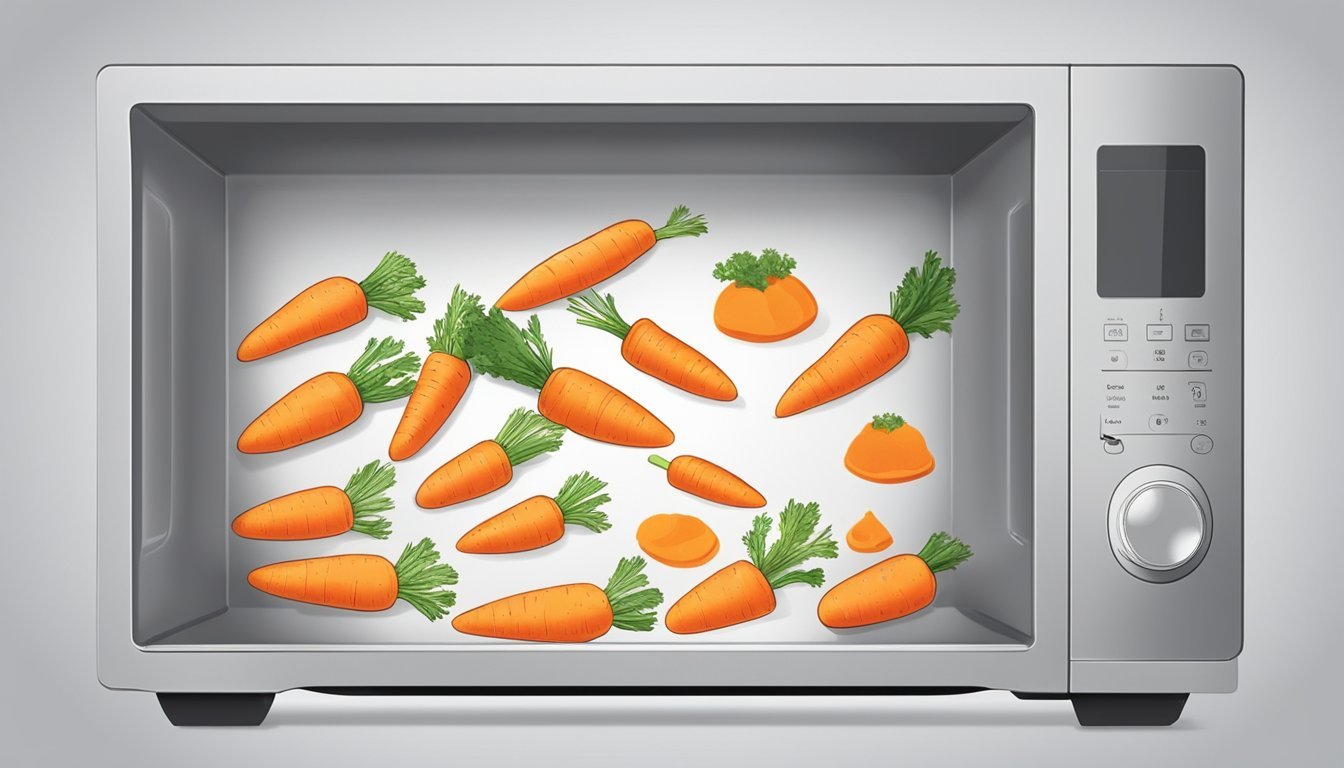How to Reheat Gluten-Free Carrots
Easy Steps for Perfect Warmth
Reheating gluten-free carrots can be simple, yet maintaining their flavor and texture requires the right technique. Whether the carrots were initially roasted, glazed, or simply boiled, ensuring their reheating process preserves their deliciousness is key. For the best results in reheating, use an oven preheated to 375°F, covering the carrots lightly with foil to retain moisture while they warm through in about 10-15 minutes.
Microwaving is another convenient option. Place the leftover carrots in a microwave-safe container, loosely covered with a damp paper towel. This method keeps them from drying out and ensures even heating. Stir halfway through heating on high power for 1-2 minutes.
For stove-top reheating, melt some butter or oil in a skillet over medium heat. Add the carrots and stir occasionally until they are warmed through and tender. This technique helps enhance and maintain their flavor profile.
Understanding Gluten-Free Carrots
Carrots are naturally gluten-free, making them an excellent option for various diets, including vegan, paleo, and Whole30.
Diet Compatibility
Gluten-Free: Carrots are inherently free from gluten.
Vegan: Suitable for vegan diets due to their plant-based nature.
Paleo & Whole30: Align well with these diets as they are unprocessed and whole foods.
Nutritional Benefits
Carrots are rich in:
Vitamin A: Essential for eye health.
Fiber: Aiding in digestion.
Antioxidants: Fighting off free radicals.
Uses in Dishes
They can be used as:
Side Dishes: Roasted or steamed.
Salads: Freshly grated for a vibrant crunch.
Snacks: Dehydrated as carrot chips.
Healthy Cooking Methods
To maintain their healthy profile:
Roasting: Enhances their natural sweetness.
Steaming: Preserves most nutrients.
Dehydrating: Keeps them crunchy and nutritious.
Flavor Enhancements
Carrots pair well with:
Herbs: Thyme, rosemary.
Spices: Cinnamon, chili powder.
Natural Sweeteners: Honey or maple syrup for a subtle sweetness.
Carrots are a versatile, healthy, and diet-friendly vegetable that fits seamlessly into many meal plans.
Selecting the Right Carrots
When selecting carrots for reheating, consider various types available. Each type has unique qualities that can affect the reheating process.
For a tender and sweeter flavor, baby carrots are a great option. These small carrots are usually pre-peeled and cut, making them convenient and quick to prepare.
Organic carrots are preferred for those mindful of pesticide use. These carrots offer a natural taste and often have a more robust flavor profile.
Rainbow carrots are a colorful alternative, adding visual appeal and varied tastes to any dish. These carrots come in red, purple, yellow, and white, each with slightly different flavors and textures.
When incorporating carrots into a recipe, freshness is key. Fresh carrots will hold up better during reheating, maintaining their structure and flavor.
It's important to store carrots correctly. Keep them in a cool, dark place if not immediately using them. In the refrigerator, store them in the vegetable drawer, ideally in a perforated bag to maintain moisture.
Freshness can be checked by the firmness of the carrot; they should snap easily and have a vibrant color. Avoid carrots that are limp, overly soft, or have black spots.
By choosing the right type and ensuring freshness, reheated carrots will retain their delicious taste and texture.
Preparation Techniques for Reheating
Perfectly reheating gluten-free carrots requires attention to detail, including how you cut, season, and store them. These steps ensure that the carrots retain their flavor, texture, and nutritional value.
Cutting and Seasoning Carrots
Start by cutting the carrots into evenly sized pieces. Uniform cuts help ensure that the carrots reheat evenly. Prep time for cutting usually takes around 10 minutes. Season the carrots simply: a drizzle of olive oil, a pinch of sea salt, and a dash of black pepper. For added flavor, consider adding garlic or thyme. These seasonings enhance the natural sweetness of the carrots without overwhelming their taste. This preparation also helps maintain the carrots' caloric and nutritional content, making them both tasty and healthy.
Storing Before Reheating
Proper storage is crucial for retaining the quality of your gluten-free carrots before reheating. Store the cut and seasoned carrots in an airtight container to prevent moisture loss and contamination. This method is ideal for leftovers and helps maintain freshness for up to 3 days in the refrigerator. For longer storage, consider freezing the carrots. Ensure the container is freezer-friendly and that the carrots are arranged in a single layer to avoid clumping. Label the container with the storage date for easy tracking. Proper storage preserves the flavor and nutritional value of the carrots, facilitating a successful reheating process.
Glazing Options
When creating a delightful glaze for gluten-free carrots, traditional sweeteners like honey and maple syrup are popular choices. For those seeking alternatives, a variety of natural sweeteners are available to achieve a tasty glaze.
Honey Glaze Preparation
A honey glaze can add a rich, deep sweetness to carrots. To prepare this, combine raw honey with a bit of melted butter. Simply melt the butter in a skillet over medium heat, then stir in the honey until well mixed.
This glaze can be enhanced with a pinch of salt and a dash of black pepper. Some may prefer to add a bit of garlic powder or fresh thyme for additional flavor complexity. This mixture should be poured over the carrots and cooked until they are tender and well-coated.
Alternative Natural Sweeteners
For those who prefer not to use honey, there are several other natural sweetening options. Maple syrup is a fantastic choice, offering a unique flavor profile. When using maple syrup, it can be combined with a small amount of coconut oil instead of butter for a dairy-free option.
Date syrup is another alternative, providing a deep, caramel-like sweetness. For a lighter option, yacon syrup works well. Additionally, sugar-free maple syrup can be a great low-calorie substitute that still imparts the traditional maple flavor.
Experimenting with these different sweeteners can help achieve the perfect glaze for your carrots while catering to various dietary needs and preferences.
Reheating Methods
When reheating gluten-free carrots, it's crucial to preserve their texture and flavors. This guide explores several effective ways to achieve perfectly reheated carrots.
Oven Technique
For oven reheating, preheat the oven to 350°F (175°C). Arrange the carrots on a baking sheet lined with parchment paper, which helps to prevent sticking. To avoid drying out the carrots, cover the baking sheet with aluminum foil. Heat the carrots for 10-15 minutes, checking occasionally. This method works well for both roasted carrots and boiled carrots, maintaining their tenderness and promoting a slight caramelization.
Stovetop Method
Using a stovetop provides a quick and efficient way to reheat carrots. Heat a non-stick pan over medium heat and add a small amount of oil or butter. Add the carrots and stir regularly to ensure even heating. For roasted or seared carrots, this method helps to maintain their caramelized surfaces. Cook for about 5-7 minutes until the carrots are fork-tender and warmed through.
Air Fryer Approach
Reheating carrots in an air fryer is excellent for retaining their crispness. Preheat the air fryer to 350°F. Place the carrots in the basket in a single layer to ensure they heat evenly. Reheat them for about 5-8 minutes, shaking the basket halfway through. This method is particularly beneficial for oven-roasted carrots, enhancing their caramelized texture while keeping them tender.
Steaming Carrots
Steaming is an effective way to reheat carrots without drying them out. Use a steamer basket over a pot of boiling water. Place the carrots in the basket, cover, and steam for 3-5 minutes until they are warmed through and tender. This method is gentle and especially good for reheating boiled carrots or retaining the integrity of delicate carrot pieces.
Pairing Gluten-Free Carrots With Other Foods
Pairing gluten-free carrots with other foods can enhance a meal and provide a satisfying dining experience.
Roasted carrots complement grilled chicken nicely due to their natural sweetness and the savory flavor of the chicken. Add some mashed potatoes or smashed potatoes for a well-rounded plate.
For a festive spread at Easter or Thanksgiving, consider pairing gluten-free carrots with whole roasted chicken or steak. The combination of tender carrots and the rich, hearty flavors of these proteins is perfect for holiday gatherings.
Vegan pizza pairs well with steamed or roasted gluten-free carrots. The carrots add a sweet, earthy contrast to the savory toppings of the pizza, catering to vegan dinner guests.
For a simple yet elegant dinner, serve carrots with roasted chicken. Enhance the meal with a side dish such as a mixed green salad or quinoa.
Steak is another excellent pairing with roasted carrots. The sweetness of the carrots balances the robust flavor of the beef, making for a fulfilling dinner.
Incorporate carrots into side dishes, such as a mixed vegetable medley, for added color and nutrition. This works well with a variety of main dishes, from poultry to vegetarian options.
Experimenting with these pairings can elevate the dining experience, pleasing the palate and impressing dinner guests with thoughtful combinations.
Serving Suggestions and Garnishing Tips
When serving gluten-free carrots, presentation is key. Consider garnishing your freshly reheated carrots with a sprinkle of chopped parsley. This not only adds a pop of color but also a fresh, herby flavor that complements the sweetness of any glaze.
A drizzle of olive oil can enhance the natural flavors of the carrots. For an additional layer of taste, sprinkle some dried thyme or fresh thyme on top. Both options add an earthy note that pairs well with most carrot glazes.
If you have prepared orange glazed carrots, garnish them with fresh rosemary. The citrusy glaze combined with the aromatic rosemary creates a delightful contrast. Simply place a sprig of rosemary on top before serving.
Serving Suggestions:
Main Dishes: Serve with roasted chicken, grilled salmon, or a vegetarian main course like quinoa salad.
Side Dishes: Pair with mashed potatoes, steamed asparagus, or a simple garden salad.
Holiday Meals: Make them part of a festive spread along with stuffing, cranberry sauce, and roasted turkey.
Garnishing Tips:
Parsley: Use fresh parsley for a vibrant garnish.
Olive Oil: A light drizzle of extra virgin olive oil can elevate the dish.
Thyme: Opt for fresh thyme when available, or dried thyme in a pinch.
Experiment with different herbs and garnishes to find your preferred combination.
Safety and Dietary Considerations
When reheating gluten-free carrots, it is important to take specific safety and dietary considerations into account.
Ensure the carrots are stored properly after initial cooking. Refrigerate within two hours to prevent bacterial growth.
Gluten-Free: Use ingredients and utensils that are free from gluten contamination. This includes ensuring all oils or seasonings used are gluten-free, such as kosher salt and avocado oil.
Dairy-Free: If following a dairy-free diet, avoid butter when reheating. Avocado oil or olive oil can be used as a substitute.
Low Carb and Keto: Those on a low carb or keto diet can enjoy reheated carrots by using minimal or no sweeteners. Avocado oil is a great option for added fats.
To retain texture and avoid mushiness, reheat carrots on medium heat while stirring occasionally. This will ensure even heating.
Grain-Free: Reheating carrots does not require any grains, making it suitable for a grain-free diet. Use grain-free seasonings to enhance flavor.
Practicing these safety and dietary considerations ensures the carrots remain a healthy and delicious part of any meal.
Final Tips for Success
Reheating gluten-free carrots doesn't have to be complicated.
Understanding how to best retain their flavor and texture is key.
Here's how to maximize your success:
Use a Low Oven Temperature: Reheat at 350°F. This prevents them from drying out.
Cover with Foil: Keep them moist by covering the dish with foil.
Add Moisture: A splash of water or vegetable broth can help.
Reheating times vary based on method:
Oven: 15-20 minutes
Microwave: 2-3 minutes
Stovetop: 5-7 minutes
Leftovers should be stored in an airtight container in the refrigerator.
This ensures they stay fresh.
When roasting, total time and cook time are crucial.
A bit of olive oil can enhance the texture.
Refrain from reheating more than once to maintain quality.
Tricks like adding fresh herbs or a dash of seasoning can revive flavors.
Feel free to be creative, but simplicity often yields the best results.









